FINDING YOUR ROOTS:
Visiting Britain's Churchyards and Garden Cemeteries
by Lise Hull
One of the best ways to get in touch with your heritage and to
explore some of Britain's most scenic countryside is to seek out
the cemetery or churchyard where an ancestor is buried. Exploring
the aging stones and also the hallowed passageways of the
adjoining place of worship can be a spiritually uplifting
experience, especially if you discover the spot where an ancestor
is buried. Headstones and effigies also record the social and
religious mores of the times, and, with their fine carvings and
sculpture, graveyards are often more like outdoor museums than
simple burial grounds. Indeed, they offer you the closest
tangible contact with your biological past.
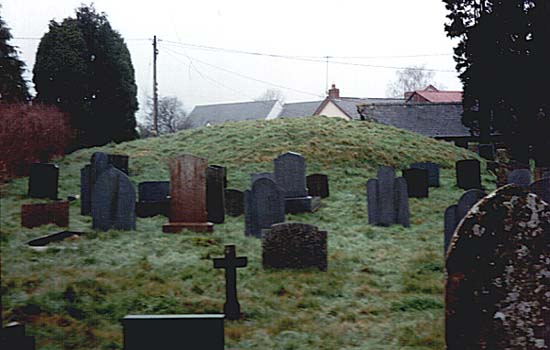
In England, visitors generally have access to two types of
graveyard. "Churchyards" are graveyards filled with parishioners
and other members of the congregation (or people who died in the
area) which are consecrated and situated immediately alongside
the church. They usually take up no more than an acre and often
date back several centuries. "Cemeteries," on the other hand, can
cover ten or more acres of land and are located on the outskirts
or outside a town. Commonly dating to no earlier than between
1820 and 1850, cemeteries are owned by a local authority, such as
the district, town or parish council, or one of London's
boroughs. Sometimes known as "garden cemeteries," they are the
by-product of an era when town populations were burgeoning and
community churchyards had begun to fill to capacity. Whereas the
majority of cemeteries are still in use, churchyards may or may
not accept new burials.
Preparing for your visit
Begin your research with what you know about your ancestors, such
as the last place they lived, where they died, or their religious
affiliation. Then,
- Refer to the relevant Ordnance Survey map to chart out
the cemeteries and churchyards in the village or locality with
which your ancestors were associated.
- Check the Internet for churchyard and cemetery indexes.
Increasingly, communities are placing this information online.
The East Ayrshire Council website is just one example: http://www.east-ayrshire.gov.uk/comser/outdoorservices/cems_home.asp.
- Contact the library or county records office for local
history books and archival information that locate cemeteries or
indicate where individuals are buried. Some libraries and
archives offer Internet research services.
- Contact the local genealogy or historical society, many of
which have websites. Members often know the whereabouts of
cemeteries and the identities of people buried there. They may
also have copies of cemetery records.
- Seek out the appropriate parish records, which may record the
burial location or the place where an ancestor died (not
necessarily the gravesite itself, but at least the place of
death, such as a hospital, which can key you to the relevant
cemetery). You may want to contact the sexton or vicar
responsible for the graveyard prior to your visit in order to
determine for certain if your ancestors are actually buried
there.
- Consider visiting an area's churchyards and cemeteries as
destinations in and of themselves to enjoy their serenity and
historic and aesthetic natures regardless of whether or not an
ancestor is buried there.
At the Graveyard
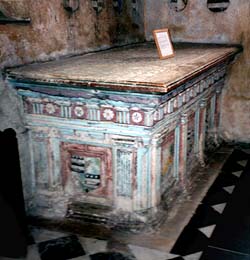 Never assume you will easily find a gravesite, even if
you have a copy of the cemetery records or a local history that
claims to pinpoint its location. Not only can the documents be
incorrect, but some cemeteries have long since been converted
into playgrounds or parks. Graves may be obscured by vegetation
or the stones so degraded that inscriptions are impossible to
read. And, even though the graves themselves may actually survive
underneath the earth, the headstones may have broken or been
moved. You may find them propped up along an enclosing wall. Never assume you will easily find a gravesite, even if
you have a copy of the cemetery records or a local history that
claims to pinpoint its location. Not only can the documents be
incorrect, but some cemeteries have long since been converted
into playgrounds or parks. Graves may be obscured by vegetation
or the stones so degraded that inscriptions are impossible to
read. And, even though the graves themselves may actually survive
underneath the earth, the headstones may have broken or been
moved. You may find them propped up along an enclosing wall.
When you come across an ancestor's gravesite, record its specific
location within the cemetery or churchyard and also relative to
other graves, particularly graves of family members. Take photos
of the site and make drawings as well. Carefully look at other
headstones. They may adorn the graves of previously unknown
relatives, including stillborn or other children. Remember to
document everything on the headstone exactly as you see it. Even
if the words are in Latin, Welsh or Gaelic, record what you see
just as it appears, as mistakes are easy to make. Photograph
every side of the stone from a variety of angles. Copy any other
carvings in case the photos do not do them justice.
Churchyards also contain chest tombs, many of which were once
elaborately decorated with carvings. If a chest tomb is located
close to ancestral graves, record it as well, in case you
determine from cemetery records that it belongs to your family.
Sadly, these tombs tend to have been ravaged by the effects of
weather and lack of upkeep. They often survive only in pieces,
their empty interiors exposed to the elements. Remember, however,
the grave itself may remain intact beneath the earth.
If you are exploring a churchyard, be sure to visit the church,
chapel or associated place of worship as well. Not only do these
buildings feature pleasing architecture, fine windows and relics
of the past, such as baptismal fonts or rood screens, but they
also house chest tombs, wall plaques and memorials. The tombs are
often quite elaborately adorned with gilt work or painted
effigies reputedly resembling the dead in prayer. Many churches
also have crypts or burials underneath the main altar or floor of
the nave and aisles.
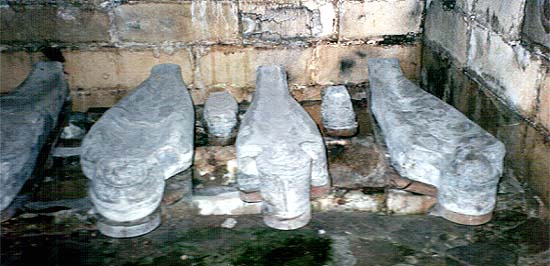
In the end, you may have to give up searching for a particular
grave. In fact, many graves were never given headstones. But,
even so, the experience of wandering aging graveyards and
exploring the effigies and tombs inside a neighboring church can
be a rewarding, educational, and once-in-a-lifetime opportunity.
The sacred grounds have an allure that encourages us to
contemplate our relationship to the dead, regardless of their
biological relationship to us. They also point to little-known
but often historic sites that in and of themselves can reveal the
story of our past.
Interpreting What You See
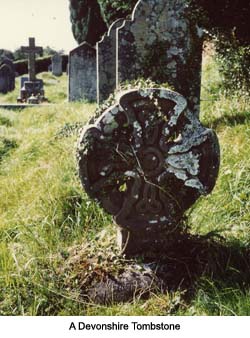 Besides documenting
birthplaces, causes of death, family names, and occupations,
gravestones often provide clues to your ancestors' lifestyles and
the prevailing attitudes that would have impacted them -- and may
have been transferred to you over the course of time. The
specific location of a grave or tomb, especially its proximity to
the church or placement in certain areas inside the church,
reflects social status. For example, burials placed closest to
the main altar or isolated in private chapels within the church
and those most extravagantly decorated or occupying specially
built crypts are associated with wealthy individuals having
social or political significance within the community. Besides documenting
birthplaces, causes of death, family names, and occupations,
gravestones often provide clues to your ancestors' lifestyles and
the prevailing attitudes that would have impacted them -- and may
have been transferred to you over the course of time. The
specific location of a grave or tomb, especially its proximity to
the church or placement in certain areas inside the church,
reflects social status. For example, burials placed closest to
the main altar or isolated in private chapels within the church
and those most extravagantly decorated or occupying specially
built crypts are associated with wealthy individuals having
social or political significance within the community.
Parishioners who could not afford church interment were forced to
bury their dead outside. Higher classes sought graves on the
eastern side of the churchyard, which was considered critical on
Judgment Day, whereas lesser status individuals were placed in
graves on the southern side. And, if the dead had the misfortune
to be unbaptized (such as stillborn infants), a suicide, an
outsider, or someone who had been excommunicated, they would be
buried in the northern corner of the churchyard -- which
traditionally belonged to Satan.
More Information:
We regret that we no longer have the resources to maintain up-to-date links and/or hours and pricing details for the various sites and attractions listed on this website. For more information about the location(s) listed above, please use your favorite search engine or visit Wikipedia.
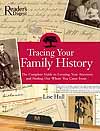 |
Lise Hull is a recognized authority on British castles and heritage, with a Master of Arts degree in Heritage Studies from the University of Wales, Aberystwyth, as well as a Master of Public Affairs degree, specializing in Historic Preservation, from Indiana University. She is the author of several of books on Britain, including Britain's Medieval Castles (Praeger: 2005), Great Castles of Britain and Ireland (New Holland: 2005) and Castles and Bishops' Palaces of Pembrokeshire (Logaston Press, 2005). Her work has appeared in numerous publications, including Military History Quarterly, Military History, Renaissance Magazine, Family Tree Magazine and Everton's Family History and Genealogical Helper magazines; she is also a regular contributor to Faerie Magazine. Visit her website at http://www.castles-of-britain.com.
|
Article and photos © 2006 Lise Hull
Devon tombstone photo © Moira Allen
|
